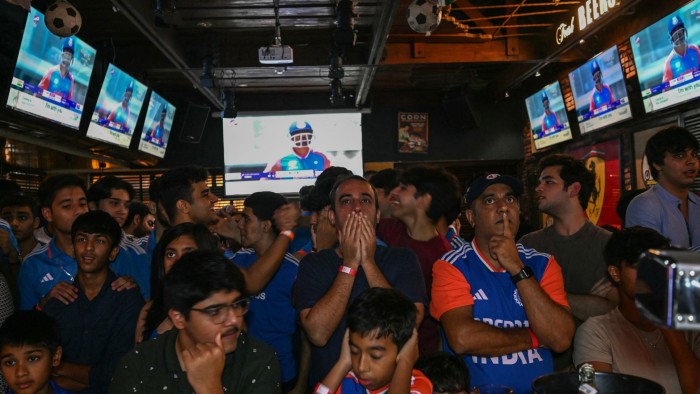Stay informed with free updates
Simply sign up to the Media myFT Digest — delivered directly to your inbox.
The head of Disney and Reliance Industries’ newly merged $8.5bn Indian entertainment titan plans to invest and “revitalise” television in the world’s most populous country even as western media organisations increasingly see it as a dying medium.
Uday Shankar, vice-chair of Jio Star — the freshly formed company whose merger was completed on Thursday — said traditional television revenue could experience “significant double-digit growth within the next several years” on the back of fresh investment in innovative content ranging from dramas to soaps.
“There is this whole narrative that television is dead and it’s all about streaming,” Shankar told the Financial Times in Mumbai in his first interview since the combination was approved by India’s regulators. “Television in this country for sure is not dead.”
While lagging growth in online streaming, Shankar pointed to a still robust linear pay-TV industry as more Indians steadily join the middle class.
EY predicts TV revenue in India, from subscribers and advertising, will increase by 10 per cent to $9bn in the three years through to 2026, while TV ownership will climb at a similar pace to reach 202mn sets.
“A large number of people are coming into the economic mainstream every year,” Shankar said. “One of the aspirational items of consumption that they acquire, or they want to acquire, is a TV.”
Shankar’s comments came as he outlined his plans after Disney and Reliance, the conglomerate run by Asia’s wealthiest man Mukesh Ambani that spans petrochemicals, retail and telecoms, agreed earlier this year to combine their Indian entertainment assets.
The combined entity has more than 100 television stations and more than 50mn streaming subscribers.
“It’s a monster merger . . . there is no competition,” said Shankar, a media industry veteran who will run the company, which is chaired by Ambani’s wife, Nita. “We have to reinvent the market and make it much bigger.”
The joint venture came together earlier this year after Disney battled to gain traction in India’s huge cricket and film markets, which have both tempted and thwarted global media majors who have struggled with highly cost-conscious audiences and fierce local competition.
After Disney acquired Star India in 2019 from Fox, the business became a financial drag. Internal debate swirled on whether to exit the country entirely, particularly after Ambani’s Reliance won the streaming rights to the wildly popular Indian Premier League short-format cricket tournament.
The new Jio Star, formed from these lossmaking media businesses, aims to hit profitability within five years. Investment bank Jefferies has compared its control over Indian sports rights to that of ESPN in the US and Sky Sports in the UK.
The media group, which has a roughly 35 per cent market share in TV, won over competition authorities after promising to shed a handful of regional TV channels and not bundle advertisements across its cricket portfolio or to raise rates exponentially.
Shankar said that “dominance in sports is highly overrated” and criticism of Disney and Reliance’s hold was “somewhat uninformed because sports rights in this country are awarded to you for a frighteningly short period of time — it’s anything from three to five years”.
Other Indian media houses have also attempted to downplay the industry impact of the merger.
Punit Goenka, chief executive of Zee Entertainment, whose long-planned tie-up with Sony would have created a $10bn rival to Jio Star before it acrimoniously collapsed earlier this year, said he did not expect to see much change after competing with the duo previously as independent companies.
“Their entire strategy is sports-focused whereas our strategy is completely entertainment-focused and, therefore, I do not think that we are really competing in that space or that segment,” he said on an earnings call last month.
“They may have a little bit more leverage on the advertising dollars that they can command given that they may have a significantly higher market share.”
Read the full article here

